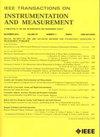SSGC-GAT: Synergistic Similarity Graph Construction Strategy Combined With GAT Network for Wind Turbine Anomaly Identification Using SCADA Data
IF 5.6
2区 工程技术
Q1 ENGINEERING, ELECTRICAL & ELECTRONIC
IEEE Transactions on Instrumentation and Measurement
Pub Date : 2024-09-02
DOI:10.1109/TIM.2024.3453323
引用次数: 0
Abstract
The supervisory control and data acquisition (SCADA) system is the standard installation on large wind turbine (WT) to monitor all major WT subcomponents. By analyzing SCADA data, the anomaly of the WT can be timely identified. However, the complex coupling relationship between different sensors poses a great challenge to the high accuracy of WT anomaly identification. In this article, a novel synergistic similarity graph construction (SSGC)-graph attention network (GAT) method that integrates the SSGC strategy into GAT is proposed to realize high-accuracy anomaly identification of WT. The GAT has a strong graph data modeling capability to accurately capture important relationships between nodes. Furthermore, the proposed SSGC strategy constructs similar graph data by fusing the adjacency matrices computed by four different methods. The SSGC strategy can adaptively learn the complex relationships among multiple parameters to improve the accuracy of anomaly identification. A large number of experiments are conducted to verify the effectiveness and superiority of the proposed SSGC-GAT. The experimental results show that, compared with other several benchmark methods, the proposed SSGC-GAT has the best identification performance. In addition, the ablation experiment results demonstrate that the proposed SSGC strategy can effectively improve the accuracy of WT anomaly identification.SSGC-GAT:结合 GAT 网络的协同相似图构建策略,利用 SCADA 数据进行风力涡轮机异常识别
监控和数据采集(SCADA)系统是大型风力涡轮机(WT)上的标准装置,用于监控风力涡轮机的所有主要子组件。通过分析 SCADA 数据,可以及时发现风电机组的异常情况。然而,不同传感器之间复杂的耦合关系给风电机组异常识别的高精度带来了巨大挑战。本文提出了一种新颖的协同相似性图构建(SSGC)-图注意网络(GAT)方法,将 SSGC 策略集成到 GAT 中,以实现高精度的风电机组异常识别。GAT 具有强大的图数据建模能力,能准确捕捉节点间的重要关系。此外,所提出的 SSGC 策略通过融合四种不同方法计算出的邻接矩阵来构建相似图数据。SSGC 策略可以自适应地学习多个参数之间的复杂关系,从而提高异常识别的准确性。为了验证所提出的 SSGC-GAT 的有效性和优越性,我们进行了大量实验。实验结果表明,与其他几种基准方法相比,所提出的 SSGC-GAT 具有最佳的识别性能。此外,烧蚀实验结果表明,所提出的 SSGC 策略能有效提高 WT 异常识别的准确性。
本文章由计算机程序翻译,如有差异,请以英文原文为准。
求助全文
约1分钟内获得全文
求助全文
来源期刊

IEEE Transactions on Instrumentation and Measurement
工程技术-工程:电子与电气
CiteScore
9.00
自引率
23.20%
发文量
1294
审稿时长
3.9 months
期刊介绍:
Papers are sought that address innovative solutions to the development and use of electrical and electronic instruments and equipment to measure, monitor and/or record physical phenomena for the purpose of advancing measurement science, methods, functionality and applications. The scope of these papers may encompass: (1) theory, methodology, and practice of measurement; (2) design, development and evaluation of instrumentation and measurement systems and components used in generating, acquiring, conditioning and processing signals; (3) analysis, representation, display, and preservation of the information obtained from a set of measurements; and (4) scientific and technical support to establishment and maintenance of technical standards in the field of Instrumentation and Measurement.
 求助内容:
求助内容: 应助结果提醒方式:
应助结果提醒方式:


